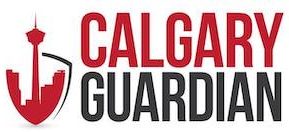When bills pile up and emergencies happen, sometimes it feels like there are few options.
However, more people are looking for an alternative to payday loans in Canada, as they learn about the perils of high-interest borrowing. Canadians are looking for a smarter short-term lending option that doesn’t get them caught up in a cycle of debt and financial insecurity. More and more, this is just one part of the overall trend toward financial wellness and sustainable financial solutions in communities where the high cost of living outpaces annual income gains.

Why the Payday Loan Cycle Is Hard to Break
While many advertise payday loans as a fast solution for emergencies, the truth is quite the opposite. Loan rates can often climb to the triple digits, meaning borrowers pay back more than they took out in the first place. Those loans go towards paying off the last, making it difficult for people to use them for a real solution.
In popular cities such as Calgary, where housing and utility prices and the general cost of living are only on the rise, we can feel this even more. A temporary solution can quickly become a long-term problem. That long-term problem can affect one’s finances, credit score, and the ultimate mental health and stress that comes with it.
Exploring Safer Short-Term Solutions
The good news is that better options exist, and some of them are actually becoming more available. Many Canadians are increasingly turning to alternatives such as community credit unions, employer-based advances, or low-interest personal lines of credit. They are typically more affordable and approachable, require lower fees and offer more generous repayment terms. This basically makes it more plausible for borrowers to get back on their feet without as much financial strain.
There are also innovative budgeting apps and online solutions making a difference. From giving you real-time insights into your spending to goal-based tools and applications, a growing number of digital options can help inform your spending and enable you to spot shortfalls before they turn into a crisis. In other words, technology is helping people avoid the dire circumstances that used to push them into high-cost short-term credit.
Building a Financial Safety Net
Of course, getting out in front of high-interest debt isn’t only about refinancing — it’s about creating a buffer. Even a little bit set aside in a rainy day fund every month can go a long way. The rule of thumb from the experts is to start with as little as $500. That’s all you need in order to cover the sorts of unexpected one-time expenses that send you into borrowing territory, like a car or a sudden medical bill.
Financial literacy is also an invaluable but underutilized tool. Free workshops and sessions are available at community centres, non-profits, and public libraries in Calgary and offer a variety of lessons on everything from budgeting and debt to savings and retirement planning. It’s about giving residents the information and knowledge they need to make financially wise decisions, even before there’s a crisis to contend with.
A Shift Toward Financial Resilience
The move away from short-term, high-interest payday loans is not an individual one — it’s a step toward healthier communities as a whole. When communities have access to fair and manageable borrowing practices and education around how to borrow responsibly, the entire local economy is equipped to benefit.
Canadians who look to safer, more sustainable borrowing methods are able to shield themselves from the debt cycle and establish a foundation for long-term financial well-being. It’s not just about making it to the next payday, but about ensuring a strong economic future free from financial crises calling the shots.
